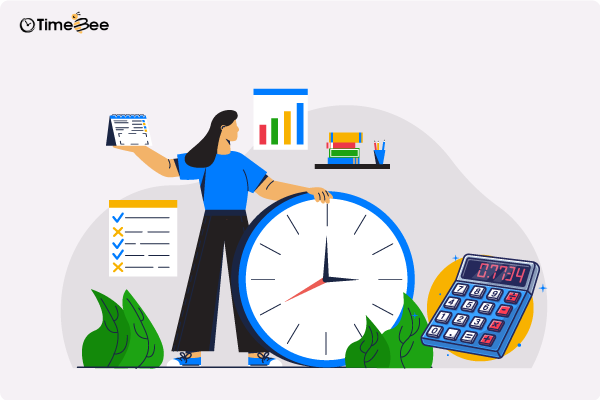How to Say ‘No’ at Work and Save Time for Priority Tasks
A vast majority of us were raised with the belief that good people self-sacrifice to help others. We feel obligated to say ‘yes’ to others despite personal chaos. In the mix of things, hustle culture is a common, modern workplace practice that is finally showing its negative impact. The hustle culture phenomenon can be best visualized as hard work on steroids. The thought that you should take ice-cold showers at 5 AM, have multiple side gigs, and work over 12 hours daily may sound a bit much. It’s the belief that one cannot achieve success without sacrificing personal comfort and happiness. In reality, setting boundaries on how much you work is critical for your own sanity. And yes, you can become a successful professional with your personal boundaries in place. But let’s first establish the reasons for saying ‘No’ at work more often. Why is it Important to have Boundaries at Work? While you don’t necessarily need to explain yourself for saying no to more work, here are some solid arguments for your own awareness: Lower the Risk of Burnout Most of us struggle when approached by managers or coworkers to accept more responsibility and achieve work-life balance. Whether or not to say yes creates a stressful dilemma because you don’t want to appear lazy or a non-team player. However, accepting work when you do not have the capacity can lead to higher chances of burnout. According to the Work in America Survey of 2023, 19% of workers confessed their workplace is somewhat toxic, and 22% believed their work has harmed their mental health. If you want to read more about career burnout, read our article Career burnout and its effects on health: how to prevent it. By saying no to work outside your capacity or scope, you can reduce work-related stress and stay healthy. Improve Productivity Prioritization is the first step in successfully achieving your goals. By properly choosing what you’ll channel your efforts into, you’re likely to make progress toward completing the essential tasks. With focused work, you’ll also be able to deliver error-free, high-quality work that you can be proud of. Avoid Anxiety You’re being unfair to yourself by adding more work to a full schedule. You eventually take work to home to meet the deadlines. With pending tasks glaring at you, you may fall into time anxiety, a serious anxiety loop that affects your health and productivity. If you want to learn more about time anxiety and how to deal with it, check out our article Time Anxiety: what it is and how you can deal with it Being selective and prioritizing your work is a great way to ensure you’re effectively managing your time rather than falling behind daily targets. How to Say ‘No’ at Work Understand Your Workload Start with analyzing your current job descriptions. What are you required to do each day, and what’s the importance assigned to each task? Are you successfully able to fulfill your key deliverables each day? Understanding the components of your workload is crucial, as is assessing your manageable work volume. Since you’re the best judge of your ability to work under pressure, these thresholds should come directly from you. Get a Time-Tracker A great way to study your daily schedule is to time your tasks and track yourself the whole day. Invest in an automated time-tracker that does the job for you. All you have to do is initiate it when you start working, stopping when you’re done. Go on and do the same for all your projects and subtasks. You’ll end up with a detailed map of what you do all day, and how much time is spent on which part of your day. Having real-time data to analyze your daily schedule offers several benefits: For example, spending 45 minutes to help with interviews will delay your client meetings for the next day. So you may have to delay your client meetings until after 2 days, should you choose to take up extra work. This may encourage you to reevaluate and stick with your priorities. If you detect any time–robbing activities, you may work to eliminate them. Similarly, if you see yourself constantly working beyond your daily hours, you can negotiate for better overtime or ask management to keep rotating shifts for better allocation. Be Assertive It’s not what you say but how you say it. Establishing boundaries will not yield results unless you follow up with assertiveness. Set your limits and stay firm on them. If you find yourself making exceptions too often, you have boundary issues. If you’re loose with your boundaries, others will go a step further and exploit them. When you’re too passive, you’re considered a doormat and open to exploitation. To avoid this, be clear and concise when setting your boundaries to show you’re serious about them. Find your voice and carefully choose your words. Don’t be afraid to openly communicate and answer questions regarding your boundaries. Be your own advocate; this means speaking up when overwhelmed. Adopt a tone that’s honest, to-the-point and sure, giving others minimal margin to negotiate. In practical terms, this could mean signing out of work as soon as it’s 6 P.M or not responding to work emails during after-hours. Communicate Often If you feel like your opinions are often ignored and people don’t take your boundaries seriously, now’s the time to communicate more. People who are introverts and sulk in silence instead of communicating their limits to their managers are frequently victims of work overload. Enhancing your communication skills is key to articulating your thoughts effectively and establishing clear boundaries. Being open to talk about your boundaries indicates their importance to you. Effective and frequent communication can resolve underlying issues necessitating boundaries. Additionally, leading your interactions with clarity and respect can help you create a good rapport with your colleagues and managers. Delegate There is no bravery in taking on piles of work that you can’t handle. Instead, foster a culture of delegating work
How to Say ‘No’ at Work and Save Time for Priority Tasks Read More »









